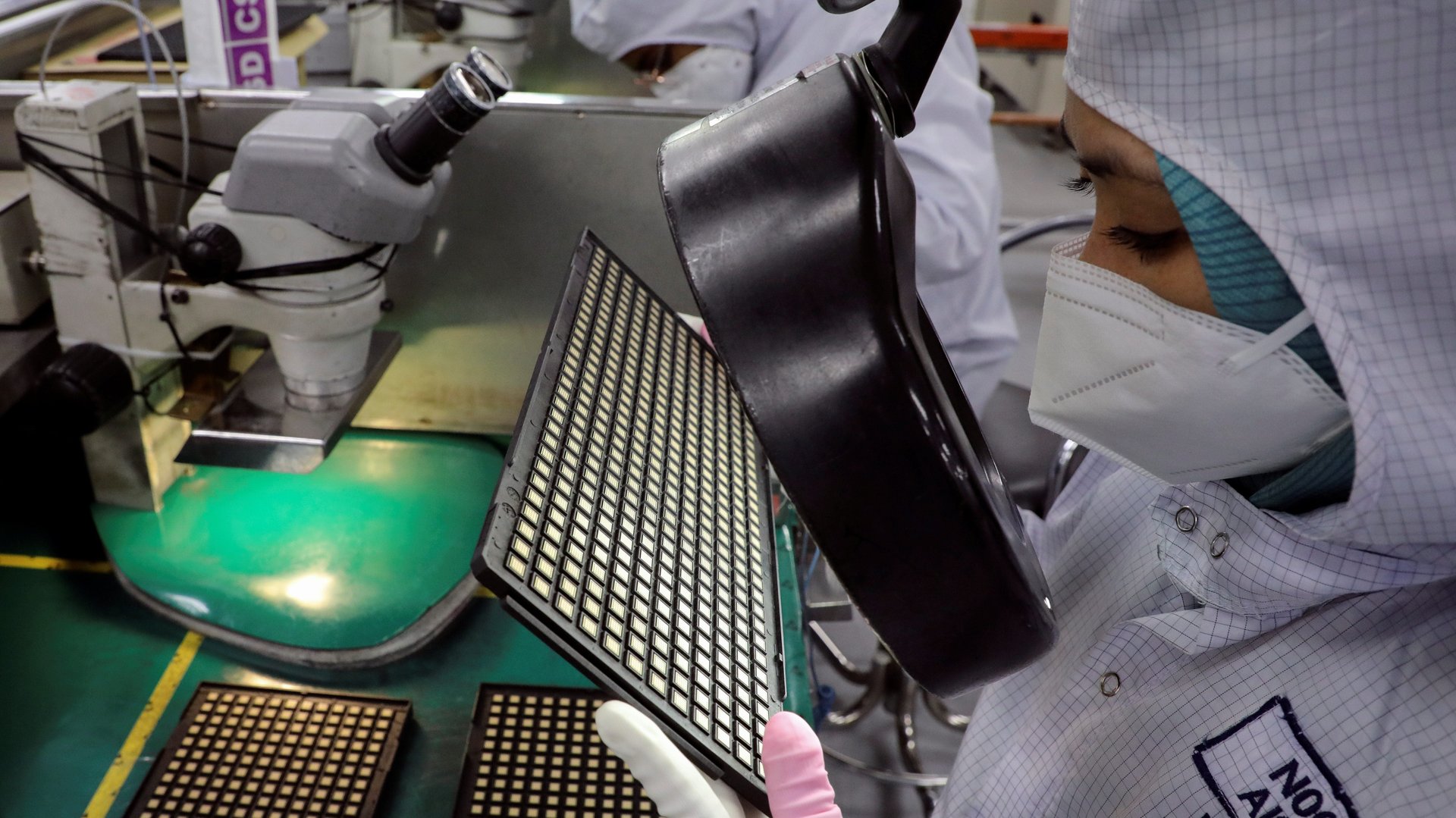If Ukraine’s neon exports flag, the chip shortage will get worse
Ukraine produces around 70% of global neon gas exports, and a purified version of that gas is so crucial to the semiconductor industry that the Russia-Ukraine war threatens to disrupt supplies and make the ongoing microchip shortage even worse.


Ukraine produces around 70% of global neon gas exports, and a purified version of that gas is so crucial to the semiconductor industry that the Russia-Ukraine war threatens to disrupt supplies and make the ongoing microchip shortage even worse.
Chip manufacturers employ lasers to etch hyperfine circuit patterns onto wafers of silicon. The lasers work by exciting the atoms of noble gases to generate light in specific wavelengths, and neon often makes up 95% or more of the laser’s gaseous contents. The neon has to be refined to a 99.999% purity for this purpose—a niche process that very few plants in the world carry out.
Among these is Iceblick, a 32-year-old company in Odessa that supplies 65% of the world’s neon. Like other neon purifiers, Iceblick takes in gases that are byproducts of steel manufacturing and other metallurgical industries. In the Soviet era, many of these plants—which continue to be in use today—were equipped with air separation units, which fed oxygen and nitrogen to the steelmaking process but also captured neon, an otherwise rare gas that only makes up 18.2 parts per million in the atmosphere.
Why does Ukraine make so much of the world’s neon?
The Soviet Union had invested heavily in the neon capture process, a 2018 German government white paper (pdf) explains, “because it was believed to be required for the intended production of laser weapons for missile and satellite defense purposes.” As older steel plants and air separation units elsewhere in the world shut down, Ukraine and Russia took ever-larger shares of the neon export market.
After Russia annexed the Ukrainian region of Crimea in 2014, neon supplies dwindled and prices shot up; at their peak, the market cost of neon was 10 times what it was before the invasion. Some companies started programs to shrink their neon consumption. Whole shutdowns of chip foundries in Japan and elsewhere appeared imminent, two industry professionals wrote in a case study.
A similar shock today will further hamper the semiconductor industry’s attempt to supply all the microchips that the world needs for its various products: toys, cars, planes, phones, watches, and practically every other even remotely smart device.
In a statement, the Semiconductor Industry Association said that the industry has “a diverse set of suppliers of key materials and gases,” and that the Ukraine crisis poses no “immediate” disruption risks. But most makers of memory chips hold around eight weeks’ inventory of neon, according to Peter Lee, a Citi Research analyst. A prolonged war could extinguish those stocks and present fresh worries for a chip-starved world.